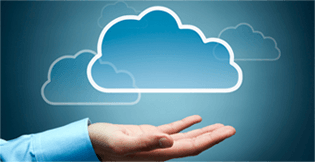Recent Interviews
The New Digital Services Ecosystem: A Revolution driven by the Convergence of IT, BPO and Digitally-fueled Outsourcing
The outsourcing journey began 23 years ago, when it was all about labor arbitrage and the focus was on cost and offshore labor– but if you think outsourcing is dead, you’re wrong – it’s just been reinvented; the outsourcing revenue decline over the past 7 years since the peak of 2014 shows no signs of turning around anytime soon, but at the same time, we see a dramatic and rapid increase in the market for digitally-fueled deals–service offerings powered by new technology, new business models, new pricing, automation driven labor arbitrage, more cloud, and more service as software.
At a key inflection point, enterprises are seeing the convergence of emerging technologies with business operations & digital transformation for a new type of outsourcing, as they re-think their business processes, organizational structure and sourcing, pricing & revenue models to adopt to a new Digital world. Never before have there been such opportunities for those seeking better, faster, and lower-cost services. If you are like most business and tech executives, you are probably dissatisfied, if not fed-up with traditional outsourcing and its labor arbitrage-centric business model. Most of the savings have evaporated, performance is lagging, and the innovation isn’t coming fast enough. Read More Here
Special Interest Groups
Digital Transformation Strategies

How are companies meeting the challenge of digital disruption? What are keys to a successful digital transformation strategy? Join the conversation, share and learn about best practices at every stage of the digital transformation journey.
IT Outsourcing

IT Outsourcing is the use of external service providers to deliver IT services, such as application development & maintenance, as well as infrastructure solutions for businesses not generally in the tech business, allowing the customer organization to focus on their main business or cut costs and maintain their position in the marketplace. This can also include software-as-a-service (SaaS), Cloud & Mobile solutions, as well as cyber-security and other related IT managed services.
Business Process Outsourcing

Business Process Outsourcing (BPO) is the contracting of a specific business operation or process, such as customer service, finance & accounting, HR, recruiting, payroll or any other non-IT business function, to a third-party service provider, typically for a non-core competency to a provider with more specialized expertise, allowing the customer organization to focus on their main business or cut costs and maintain their position in the marketplace. BPO is often divided into two categories: back office outsourcing which includes internal business functions such as billing or purchasing, and front office outsourcing which includes customer-related services such as marketing or tech support.
Digital Services

The convergence of software, services and digital channels is resulting in a paradigm shift within the Services industry. Traditional services firms are transforming to help their customers through the Digital journey. Organizations are increasingly relying on Service providers as partners to help them transform into a Digital enterprise. By combining the power of Digital Services such as analytics, mobility, IoT, automation and cloud, organizations can enhance customer engagement, improve performance and drive new growth opportunities in a Digital world.
Emerging Technologies

Emerging Technologies is an ongoing opportunity but also a challenge to many organizations. Questions such as what to invest, what to cease and how to "stack" things together is a priority to many Executives, Service Providers and Advisors. Although challenging, emerging technologies can represent a big leap of change, an opportunity to transform an organization's environment and services to a level no one has thought of. At the same time, the process of deciding and adopting a new technology is very risky and time consuming. In this Special Interest Group, you will get a perspective on some of the latest emerging technology changes and how organizations are dealing with the exact same questions, opportunities and challenges your organization is looking to address. Great examples of emerging technologies include Artificial Intelligence and Robotics Process Automation.
Automation

Just as industrial automation (robots) have revolutionized how work gets done across the manufacturing industry we are now seeing another automation revolution happening where any organization that uses labor on a large scale for general knowledge process work, where people are performing repetitive, high-volume, highly transactional process functions. The recent advances in robotic process automation (RPA), cognitive computing and artificial intelligence (AI) will fundamentally change how work gets done! Virtualized FTE's or digital labor is revolutionizing the way we think about and administer business processes, IT support processes, workflow processes, remote infrastructure and back-office work. The result will deliver significant cost savings as well as provide dramatic improvements in accuracy, reduced cycle times and increased productivity in transaction processing while it elevates the nature of work by removing people from dull, repetitive tasks. Outsourcing as we know it will be forever changed, large enterprises are rethinking how work gets done, and every industry will be impacted.
Cloud

Cloud computing is an Internet-based model providing on-demand access to infrastructure and computing resources, typically visa a utility-based model via shared processing resources, data storage and other devices on demand. Current Cloud topics include cyber-security, mobile applications, the true cost & ROI of Cloud, Migration & moving from Legacy to Digital Systems.
User Experience

Along with RPA, BPaaS, and Analytics & AI, the Internet of Things (IoT) is one of the key digital phenomena currently changing the face of outsourcing. NelsonHall estimates the global market for IoT services at $1.2bn, and this is expected to grow to $9.5bn by 2020, making it the fast-growing of the ‘digital transformation’ market segments (51% CAAGR). Here, we will be looking at the key IoT themes, and at the areas where IoT outsourcing opportunities are fast emerging.
FinTech

In 2017, we are seeing financial services disappear into day-to-day life as banking becomes more seamless. Much of this trend is driven by large tech firms, like Amazon and Google, whose technology is likely to reshape banking with self-service kiosks, video conferencing, and other services. This transition raises many questions. Will banks be able to integrate with these platforms in a way that is compliant? How will these new partnerships affect legacy core technology that has been around for decades, but that cannot keep up with the on-demand pressures of today’s marketplace? A lot of traditional financial companies are looking at tech as the answer to these questions and as a way to get ahead of the competition. Platforms that do not have payments as a core service are increasingly turning to fintech companies to manage the complexity of global payments. In turn, fintech companies are looking for ways to scale their back-end operations. The way we connect with our banking and finances is evolving at lightning speed, and we are at the cusp of seeing how these connections will be made.
BPaaS

Business Process as a Service (BPaaS) is the delivery of business process outsourcing (BPO) services via the cloud, typically leveraging a utility-based, on-demand or consumption-based pricing model, and is accessible as a cloud, web-based service, not requiring the client to own or manage its own infrastructure.
Vendor Management

Vendor management and governance is emerging as a top business priority. Organizations are recognizing that effective oversight of service delivery is essential to managing multi-vendor service delivery models, to achieving anticipated value and benefits from outsourcing and to complying with increasingly stringent regulatory compliance requirements. In structuring their vendor management functions, businesses are focused on enabling consistent and standard oversight of each provider, as well as transparency and visibility into the entire chain of service delivery. Increasingly, businesses are outsourcing the day-to-day administrative tasks of vendor management to a third-party provider, and finding that this approach yields significant cost and performance benefits.












































